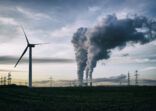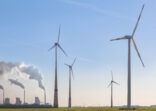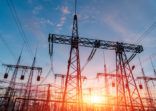Enticing investment opportunities are re-emerging in selective parts of the energy transition universe, after some weakness and volatility in early 2021 softened soaring valuations late last year.
Equities in five key sub-sectors and themes look set for strong growth, according to Schroders. These are: clean energy generation, transmission and distribution, energy storage, energy efficiency and clean mobility.
“Consumer demand for clean technologies is really starting to pick up. More and more consumers want to drive electric vehicles (EV), have residential solar on their roofs and use clean energy technologies,” said Alexander Monk, global renewables analyst at the UK asset manager.
Energy transition as a theme is benefitting from policy support, globally, that has never been more aligned nor as strong. “For the first time ever, we entered a calendar year whereby the US, Europe and China all have net zero carbon goals and together they account for 75% of all emissions globally,” Monk explained.
Further, Covid-19 has created clear long-term visibility over the energy transition value chain.
Energy u-turn
The return to more bullish sentiment for certain parts of the energy transition space is a welcome change from a few months ago.
While 2020 saw strong fundamental earnings growth in energy transition equities, valuations had reached all-time – and, potentially, unsustainable – highs by the end of the year. At that point, despite the positive long-term opportunity, Schroders decided to rotate some of its strategy into slightly more defensive sectors.
In early 2021, however, following weakness and volatility appearing in areas such as solar, hydrogen and renewable generation, the firm started to re-enter the sector. The focus has been on names it fundamentally likes, but where valuations had started to look a little bit challenging.
“Renewables are currently the cheapest form of power generation globally across three quarters of the world and are only getting cheaper,” Monk added.
Strong sector support
For example, in the transmission and distribution sector, recent events in Texas have seen record-low temperatures resulting in loss of coal, natural gas and nuclear power production, in turn leading to energy shortfalls and blackouts.
“[This] highlights why investment in the grid clearly needs to pick up,” said Monk. “We’ve been looking at names which we believe are fundamental to building out the grid, whether cables to offshore wind farms or smart distribution software for the grid.”
In addition, companies which are providing EV charging infrastructure, critical grid components and grid software are of growing appeal.
Given the recent weakness in solar, meanwhile, Monk said Schroders has started to see more attractive risk-reward opportunities. “Solar, both at the residential and utility scale, is going to be hugely important to driving the energy transition going forward. After the recent weakness, we’ve been allocating to solar names.”
Clean mobility is another sector to watch, he believes. Demand for EVs, for instance, has started to pick up – particularly in Europe, which reached double-digit penetration rates towards the end of 2020. Now, new and more attractive EV models are starting to come to market that is helping to drive consumer demand.
“We’ve been identifying companies that have that clean mobility exposure and are driving the shift in our mobility system and pushing electric vehicle usage,” Monk explained.

















